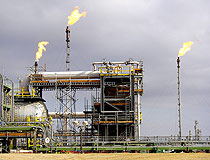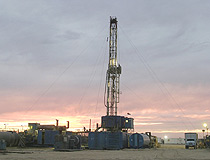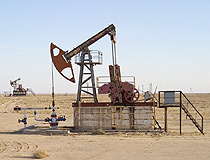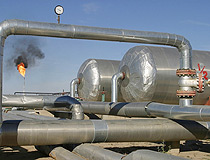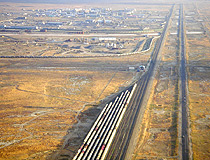Kazakhstan natural gas overview
Despite Kazakhstan’s sizeable proven natural gas reserves of 65-70 trillion cubic feet (comparable to Canada and Kuwait and ranking it in the top 20 countries in the world), Kazakhstan spent most of the time following independence as a net natural gas importer.
Kazakhstan natural gas facts
By 2004, however, Kazakhstan’s gas production had reached parity with its consumption level (approximately 550 Bcf), and Kazakhstan had 40 Tcf in net exports of natural gas during the first half of 2005.
Preliminary estimates show that Kazakhstan natural gas production has increased almost 24 percent during the first half of 2005, to a rate of 570 Bcf per year. This compares to around 460 Tcf during the same time period in 2004. Most of Kazakhstan natural gas imports come from Uzbekistan and Turkmenistan and are redistributed into Russian natural gas pipeline system.
Kazakhstan natural gas features
Most of Kazakhstan natural gas reserves are located in the west of Kazakhstan, with roughly 25 percent of proven reserves situated in Karachaganak field. This oil and gas condensate field reportedly has proven natural gas reserves of 16-20 Tcf. The consortium developing Karachaganak expects peak production by 2010 at around 1 Tcf.
Because of Kazakhstan’s divided distribution network, Karachaganak’s natural gas is exported northward to Russia’s Orenburg processing plant, as opposed to being delivered to Kazakhstan consumers in the south.
During the spring of 2005, “Kazmunaigaz” and “Gazprom” companies announced plans to set up a joint venture to modernize Orenburg gas processing plant to increase the capacity to process almost 300 Bcf of Kazakhstan natural gas from Karachaganak field.
Kazakhstan natural gas is almost entirely “associated” gas, meaning it is produced with oil. For this reason, several Kazakhstan oil and gas fields including Karachaganak reinject significant quantities of gas into the ground to maintain crude wellhead pressure for liquids extraction. In the long term, when the liquids are exhausted, the gas can be recovered.
Flaring has declined steadily, but in May 2005 Kazakhstan government ordered all 34 oil producing firms to reduce oil production to levels that would avoid natural gas flaring. Many of the companies that produce associated gas have made pledges to develop ways to use the gas (such as for electricity generation) but have stalled.
Another important Kazakhstan natural gas field, Amangeldy, is situated in the south of the country, near Zhambyl. Exploratory drilling in 2001 indicated reserves of up to 1.8 Tcf. The field is being developed primarily by “Kazmunaigas”, and the company expects initial production of roughly 35 Bcf/y after initial developments. Amangeldy fields that have been developed are producing approximately 880 million cubic feet per year (mmcf/y).
The new commissionings of wells at Amangeldy field have provided a large share of Kazakhstan natural gas production increases over the last years. Plans to build a 120-mile pipeline connecting to the rest of the natural gas distribution structure will help lessen the southern regions of Kazakhstan gas import dependency.


